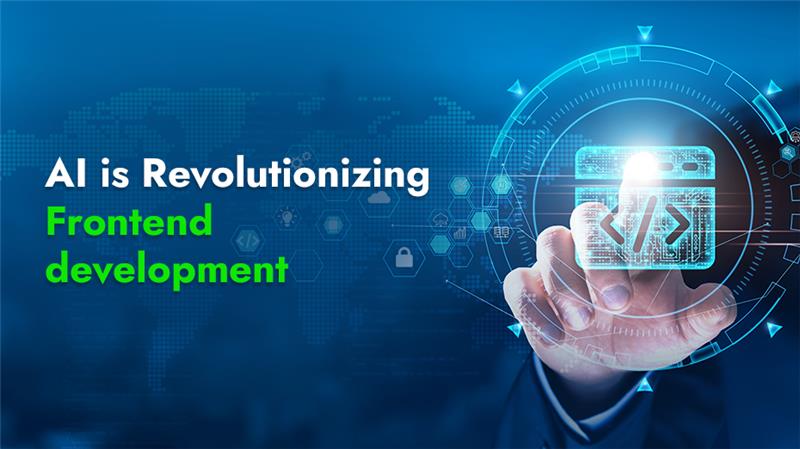In current years, the world of net improvement has seen a massive transformation—thanks to the combination of synthetic intelligence (AI). One of the most thrilling shifts is inside the frontend code technology process. From automating layout-to-code tasks to enhancing developer productivity and user enjoyment, AI is making frontend improvement quicker, smarter, and greener than ever before.
The Traditional Frontend Development Process
Before diving into how AI is changing things, it’s essential to apprehend the conventional frontend workflow.Traditionally, frontend improvement involves:
Translating design mockups (from gear like Figma or Adobe XD) into HTML, CSS, and JavaScript.
Writing repetitive boilerplate code.
Constantly trying out and debugging throughout browsers and gadgets.
Manually optimizing overall performance and responsiveness.
These tasks, though vital, are time-ingesting and susceptible to human blunders. Enter AI, with its ability to automate, analyze, and generate fantastic code with minimal enter.
How AI Is Transforming Frontend Code Generation
1. From Design to Code – Instantly
One of the most groundbreaking improvements is AI-powered layout-to-code equipment. Platforms like Anima, Locofy, and Figma AI plugins can now take a UI layout and convert it into useful React, HTML/CSS, or Flutter code in seconds. This reduces the want for guide coding and speeds up the development technique.
Benefits:
Faster prototyping.
Fewer translation errors among layout and development.
Greater alignment between design and code.
2. AI-Powered Code Suggestions and Autocomplete
Modern IDEs like Visual Studio Code, blanketed with gadget like GitHub Copilot, use AI models (like OpenAI’s Codex) to provide real-time code hints.These tools understand the context of your code and might autocomplete capabilities, restoration mistakes, and even write complete additives.
Benefits:
Increased coding speed.
Reduction in bugs and typos.
Enhanced learning for junior developers.
3. Responsive Design Made Smarter
Creating responsive layouts throughout multiple display sizes is frequently tedious. AI equipment can now predict consumer interplay patterns and propose format adjustments that enhance responsiveness. Some frameworks may even auto-generate media queries primarily based on detected screen behaviors or existing layout patterns.
4. AI in Accessibility Optimization
Accessibility is a felony and ethical requirement, but often ignored in frontend development. AI can now analyze frontend code to indicate upgrades for WCAG compliance, together with adding ARIA labels, adjusting coloration contrast, or enhancing keyboard navigation.
5. Bug Detection and Code Quality Analysis
AI fashions can scan your codebase and detect anomalies, logical mistakes, or inefficient code. Tools like DeepCode and SonarQube (AI-integrated) use gadgets gaining knowledge to flag ability issues before they turn out to be critical insects in production.
6. Natural Language to Code
One of the maximum futuristic traits is the potential to generate code from simple English. For instance, a developer would possibly type:
“Create a responsive navbar with emblem at the left and hyperlinks on the proper” — and the AI immediately generates the corresponding HTML and CSS. This empowers even non-developers or low-code users to participate in constructing frontend interfaces.
Real-World Use Cases
Let’s examine a few realistic examples of ways groups and developers are using AI in frontend development:
Startups Are the usage of AI tools to fast prototype MVPs and check thoughts.
AgenciesAccelerate improvement for patron initiatives by means of the use of AI to transform designs into code.
FreelancersLeverage AI autocomplete and computer virus-finding tools to boost productivity and decrease debugging time.
Large enterprises Automate trying out and deployment pipelines with AI-pushed code validation.
Challenges and Limitations
While the effect of AI is extremely good, it’s not with out demanding situations:
Code quality and consistency: Auto-generated code may not continually comply with great practices or be smooth to keep.
Over-reliance:Developers may additionally turn out to be too dependent on AI tools, risking a decline in trouble-solving skills.
Security: AI-generated code might also inadvertently introduce protection vulnerabilities if now not nicely reviewed.
Context understanding:AI still struggles with complicated common sense or deeply contextual requirements.
The Future of AI in Frontend Development
The future is promising. With improvements in multimodal AI, we’re drawing near a time when full web pages can be constructed by means of without a doubt importing a wireframe sketch and describing the desired functionality. AI will hold to enhance:
It is better to understand the developer
Cleaning cleaner, scalable code
Integrating seamlessly with CI/CD pipelines.
Offering actual-time personalization based on person conduct.
Some even speculate that AI will act as a “pair programmer”, assisting builders during the entire challenge lifecycle—from ideation to deployment.
Conclusion
AI isn’t always right here to replace frontend developers, but to decorate and empower them. By automating repetitive obligations, accelerating prototyping, and enhancing code first-class, AI is revolutionizing the manner we approach frontend code generation. Developers who embrace these tools will no longer handiest save time but also unencumbered new stages of creativity and innovation.
In a hastily evolving virtual world, AI isn’t simply the future—it’s the present. The smarter we work with it, the greater we are able to obtain.

